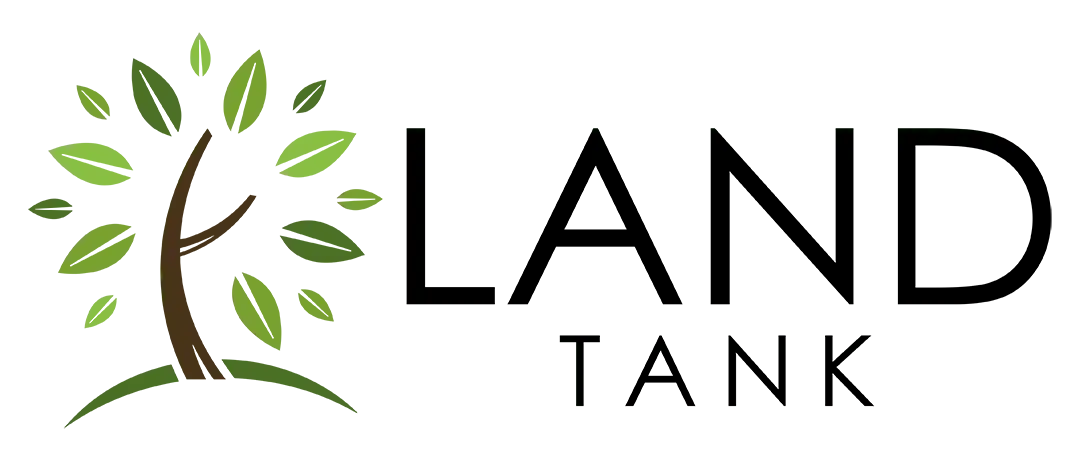Mastering Real Estate Direct Mail: The Red Green Yellow Test
In this episode, hosts Steven Jack Butala and Jill K DeWit dive into the powerful red green yellow test, a method they developed for determining the best places to send direct mail for real estate deals. This technique has become a key part of Land Academy’s success and has been widely adopted by others in the industry. Learn how the red green yellow test works, why it’s so effective, and how you can use it to make smarter, data-driven decisions when sending out your next batch of mail.
—
Listen to the podcast here
Mastering Real Estate Direct Mail: The Red Green Yellow Test
Introduction To The Episode
This is episode number 2,026. We’re going to talk about how to locate places to send mail using the Land Academy red-green-yellow test, something I came up with a lot of years ago. It’s widely copied by all the other people who think they can teach this on the internet, and we’re going to describe it and let you know why we think it works and why it works for us and many Land Academy members.
Can I ask a question? Why do you choose the colors in that order? I think of a stoplight.
It’s one of those things, like the same reason that Google is spelled wrong because somebody spelled it wrong.
How should Google be spelled?
I don’t know exactly the correct spelling because they spelled it wrong.
Is it G and U with two dots over it?
No, it’s nothing like that. Everybody’s looking up, “How do you really spell Google?”
You didn’t just make that up?
No. You’re all right.
No, you don’t have to do that. I totally believe you, but I didn’t know we were saying it wrong. Google? How should we be pronouncing it? What was it supposed to be?
Google is something in science. I don’t want to restart the episode, but the fact is, I don’t know exactly what it is, and I don’t know how to spell it.
Does Google mean something?
Yeah, like Tesla. Tesla is not a car. It’s the last name of a person who created a scientific process. Google is something.
You and I read very different articles.
That’s right. To answer your question.
For those of you who are going, “What?” I, too, am in the same boat with you. I learned some new things. Thank you, Jack.
You can do the Google Tesla research yourself. You can choose whether or not to listen to the rest of the science.
I thought it was red-yellow-green, the way the stoplight goes. That’s how I describe it.
I started saying red-green-yellow, and here we are.
It throws me. Every time you say it, maybe that was the point, to mess with me.
We’re talking about rules to live by in your land business. We’ve listened to Monday and Tuesday already. We’re talking about how to locate places to send mail using my ill-named process, the red-green-yellow test. We’ll talk about how often do you have to renegotiate the price in a land deal?
Friday, it is getting land deals under contract to be purchased in two days.
Each day, and you’ll find out in a second here on the show, we answer a question from our Land Academy member Discord Forum and take a deep dive into land-related topics by your request.
Mark wrote, “What parts of the red-yellow-green test.”
She’s right, too.
Just saying, are you seeing fail more predominantly in the current environment? We talked about this just yesterday.
Isn’t that a great question?
Go for it.
The way that I do the red-green-yellow test doesn’t fail. The way that we’re seeing, when we talked about, in the module where we talk about this test, what the red-green-yellow test is, is this, if you can picture in your mind on a map between 3 and 10 ZIP codes that are all adjacent to each other in an area, they’re all squiggly lines, like pieces of a puzzle.
Explaining The Red Green Yellow Test
The whole point of the red-green-yellow test is to analyze each one of those ZIP codes from a data standpoint and find out which ones are very viable to buy and sell real estate in and which ones are not. They’re all relative to each other, which is why we and I teach and test them for ourselves when they’re adjacent. If you have three ZIP codes, one of them is going to shine, and we’re going to look at days on market.
Key Indicators In The Red Green Yellow Test
When property gets listed for sale in each of these three ZIP codes, which ZIP code does the property sell the fastest? Another statistic we look at is how many properties are for sale in that ZIP code, divided by how many properties are in the universe of that entire ZIP code. What percentage of property in ZIP code number one is for sale? Let’s say it’s 1%. In one ZIP code, in another ZIP code, it’s half a percent. In another ZIP code, it’s 0.1%. Very few properties for sale. I’d choose number three. We’ve got one that’s got the fastest-moving property, one that’s got the least amount for sale, and then we look at a couple more statistics, like pending property. It’s all about, if I get a property in this ZIP code, will it sell fast and what type of property do they want that people are buying?
It’s funny about that. You and I, as we’re recording this, it’s September and we’re sitting in Montana. I was actually studying the Montana market with you this morning, and I went. It was like 300 properties for sale. This is all types, not just land, in this particular market, and it was a small market. Basically, it made up a third of the market. It was like a third or fourth, maybe a fourth, of the market. That was 20%. That’s a lot.
Something like that, 25%, even 10%, if 10% of a market, the whole market, is listed for sale, do you want to swim in that pool? Do you want to be one more thrown in there for sale? That’s the stuff that’s smoked out by this test.
All of that, she’s exactly right. The key is, invariably, people will ask, “Okay, well, what’s the threshold then? Is it 1% of the entire market?” My answer is this. it is all relative to the ZIP codes that are adjacent, and that’s it. If you’re looking at 3 to 10 ZIP codes in a market where you’re lucky enough to have that much data, the red-green-yellow test will tell you where to send mail and, if it’s priced correctly, how fast it’ll sell. The title of this is “How to Locate Places to Send Mail Using the Land Academy Test.” It tells you where to send mail.
Let’s call it. Let’s say this is the meat of the show.
This is the meat of the show. That is a good question.
We haven’t even got there.
The topic’s exactly the same. Invariably, what I get asked is, how much is enough? My answer always is, it’s relative, and I know that that sounds nebulous, but it’s really not. In a group of ZIP codes that you’ve identified that you’re testing, 2 or 3 of the ZIP codes are going to do great, and this is the way it happens in real life. Two or three are great. We send out all the mail there, and one, possibly two, smashes you in the face that you should not be buying property there, like what Jill just said. If 33% of the entire market is for sale, run the other way.
In land investing, 33% of the market being for sale is a red flag. Don’t swim in that pool! Share on XThat’s the thing. If you think, “I’m going to go in, and I’m going to be the cheapest one. No big deal. I don’t care.” That doesn’t always work that way. You’re not going to stand out, and then sometimes, if you have the cheapest property, you’ve got people. It could be a phenomenal property that you bought so well in a perfect world. You bought it great. It’s beautiful. Everything’s awesome. You are 70% of everything else that’s out there, and everybody looks at it like, “What’s wrong with it?” I’ve had that. You can’t do that. It just doesn’t make any sense.
The numbers are really off on the red-green-yellow test. It’s indicating something. You can spend a lot of time, which is what I actually do. I’m not saying you should do this, and you probably shouldn’t. I want to know why when there’s some weird stuff going on. Here are some popular reasons why things are really off with the red-green-yellow test, the average price per property is way too high. Jill and I have spent this entire summer driving around the western part of the country in these mountain towns where everything is, in my opinion, grossly overpriced, and a lot of the properties are vacant, they’re second homes, and people don’t care.
They buy a property for $500,000 and they put it up on the market after they’ve used it for a couple of seasons for $2.5 million, and it sits there for years on the market. They don’t care, and that’s fine. That’s actually not a bad business model. They’ll wait for the market to catch up or contribute to dragging the market up to those prices. That’s not the kind of market where you want to buy and sell a piece of property in two weeks, unless it’s really cheap. You can spend a lot of time figuring out why, or you can just look at the data and say, “I’m not sending it to these three ZIP codes, but I am going to send it to these five ZIP codes.”
It’s very clear why. There are not a lot of properties for sale. The properties that do go up for sale sell very quickly, and the average prices are very low and affordable for the area. I could have sent it to that ZIP code. It’s automatic. You will automatically get deal flow if you do this correctly and often in a system.
Setting Acquisition Criteria For Success
What’s great about this whole test, too, is it starts with trolling. Let me just back up and paint the picture, and then we can wrap it up on this. What we show you to do is first pick acquisition criteria. Do you really start with that? How much money do I want to spend? How much am I going to try to make? What do I want to do this year? How much do I want to do this month?
Success in real estate starts with setting your acquisition criteria. Define your goals and let data guide your decisions. Share on XHow many deals do I want to do? It really starts with that first. Having that goal in your head, “I want to make a million dollars this year. I want to do four deals or so a month,” and back into it that way, and you can see all of that, then we have a whole spreadsheet. I say we when it’s Jack’s, a whole spreadsheet that you plop in these numbers, and it backs into it going, “This is what you need to buy.” You need to buy properties within this price range, or you’re going to buy them at this price, sell them at this price, and this is probably how much mail you need to send.
That starts there with your criteria. You’re going, “Okay, I learned to troll and go find the areas that these numbers make sense.” Look at all these people over here in X, Y, Z state and X, Y, Z county. These numbers and these properties all fit exactly what I’m trying to do, but don’t stop there. Let’s all triple-check and make sure we’re doing the right thing, too. That’s where this red-green-yellow test comes in, and we’re so data-nutty to make sure that we’re making really smart decisions.
My entire career, I’ve been in some version of acquisitions, corporate acquisitions, real estate acquisitions, and many more for nonprofits, for-profits, healthcare systems, investment banks, and finally, for myself. Whoever you’re learning this from is listening to what we are saying here, and 2 or 3 weeks later, you’ll hear it from some of the other people.
That happens often.
What they happen to be is very good at SEO. Jill and I are the originals in this, the original educators in this space. In fact, I created this mailer system, and everybody else copied it, and that’s fine. My point here is I’ve been in acquisitions for decades, and I can tell you that the system works. It all starts with one thing. You turn your computers off, you turn everything off, you sit down, and you decide how much money you want to make, how many deals you want to do, and what your career looks like with a piece of paper and a pencil, with a big eraser on it because it’s going to change all the time. Once you decide that, Jill just said it perfectly, “I want to make $1 million a year. I want to do 1, 2, 3, or 4 deals a month.”
This is what the deals look like, and this is how much mail I have to send out and the process that I have to go through to get to that end. The red-green-yellow test takes all the guesswork out of it. It says, “This ZIP code will fulfill what you’re trying to do, your criteria, and this ZIP code will not.”
The Red Green Yellow Test removes all guesswork in land deals. It shows you exactly which ZIP code will fulfill your goals and which won't. Share on XThat’s it. If this sings to you, we can help you. You’ve got to be data-nutty. If you’re data-nutty, we’ll show you the way.
Of all the people who are existing Land Academy members and who have gone through Land Academy and are on their way now and executing, half of them are like me, and half are like Jill. If you have had a lot of experience in sales or you’re a born salesperson, find a Jack, and the reverse is true. If you’re lucky enough to be a small percentage of a person with both, then you probably have bigger problems than us.
Join us again as we discuss how often land purchase price renegotiation happens.
Final Thoughts From Jack And Jill
You are not alone in your real estate ambition. We are Jack and Jill. Information and inspiration to buy undervalued property.















